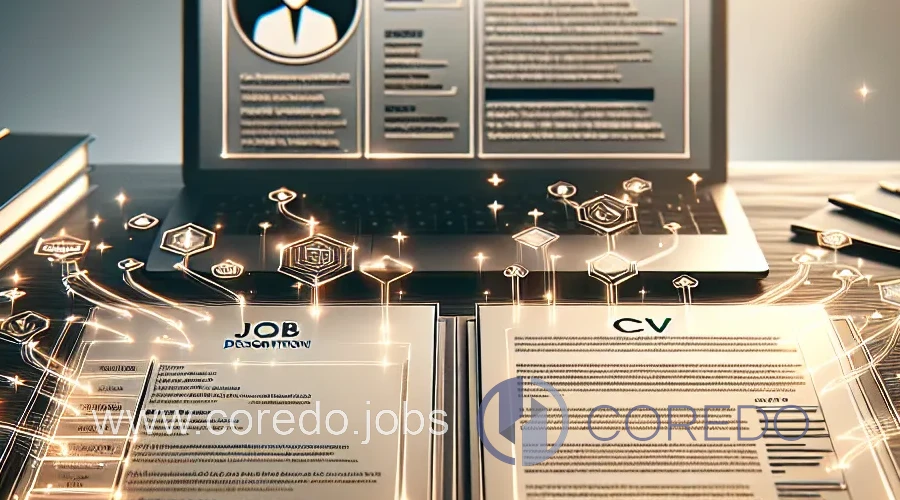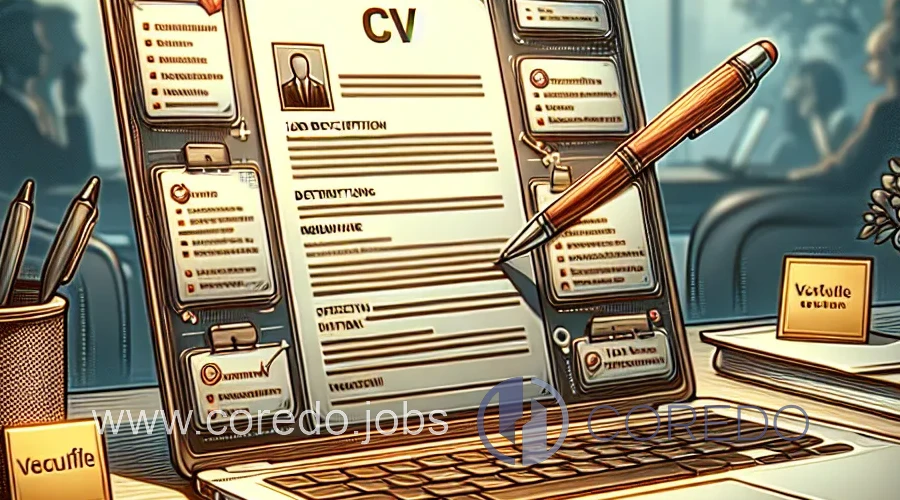Why is a CV a marketing tool?

To follow up, we will immediately move on to how to structure summaries and skills so that your measurable value stands out.
How to write a results-oriented CV for managers and marketing?
What to include in a CV and what to omit?
How to write a modern structured resume

What to include in the header and contacts in a CV?
How to set a relevant candidate profile?
How to write work experience using CAR/STAR method
When to include education and certifications?
Optional sections in a CV: Achievements, Projects, Skills, Interests
- Achievements: 3-5 top “achievement statements” with KPIs.
- Projects: short case studies with results and periods.
- Skills: distinguish hard vs. power skills, specify tools.
- Interests: choose those that signal values and “culture add,” not clichés. This supports cultural alignment that employers are looking for.
Photo in a CV: yes or no?
How to write a captivating resume?

Start by highlighting the essentials right at the top and tailoring the content to the specific position – effective structuring, measurable results, and clear language determine the first seconds of reading. The following section “How to structure a CV for better readability?” will guide you through logical organization from the most important information to supplements, so your profile reads quickly and convincingly.
How to structure a CV for better readability?
How to set fonts and text size?
How long should a resume be?
How to write language and grammar in a CV?
How to make an ATS-compatible CV?
How to rewrite job duties into achievements in a CV?

To know how to rewrite job duties into achievements in a CV, start by turning responsibilities into measurable results and specific impacts on the company, ideally with numbers and facts. Following that, the CAR/STAR framework will help you structure short “mini-stories” of achievements: task, approach, result, and benefit for the employer.
How to use the CAR/STAR framework?
- Context: starting point, scope, benchmark.
- Action: what I did, tools, stakeholders.
- Result: numbers, percentages, period, baseline vs. lift.
How to measure KPIs: revenue, ROI, LTV/CAC, NPS
Examples of rewrites for marketing, sales, product, operations, and finance
- Marketing: “Managed campaigns” → “Increased ROMI by 42% over 2 quarters through segmentation and automation; pipeline share 35%.”
- Sales: “Responsible for acquisition” → “Increased ARR by 1.8 million CZK, win-rate +7 pp, shortened sales cycle by 14 days.”
- Product: “Coordinated development” → “Shortened time-to-market from 6 to 3 months, NPS +12, adoption of the new feature 28% MAU.”
- Operations: “Managed shifts” → “Reduced scrap rate by 19%, OEE +5 pp, cost savings of 1.2 million CZK annually.”
- Finance: “Prepared reports” → “Shortened monthly closing by 3 days, optimized working capital, reduced DSO by 11%.”
How to tailor a CV to a job description?

Are you wondering how to tailor a CV to a job description? A short analysis of the advertisement and targeted use of keywords will quickly connect your experience with the employer’s expectations and prepare the ground for practical tips on how to use keywords from the ad in the CV.
How to use keywords from an ad in a CV?
How to unify role and technology names?
How to modify a CV for different industries?
What are the mandatory parts of a CV?
And now let’s see how to write each of these parts briefly, accurately, and with regard to the position you are applying for.
What belongs in a resume?
What does not belong in a CV: salary, sensitive data, irrelevant experience
How to write concisely and verifiably?
What are common mistakes in a CV and how to fix them?
Before you dive into the question “What are common mistakes in a CV and how to fix them?”, focus on what recruiters are really looking for: quickly readable, relevant, and verifiable information. Under the heading “Generic phrases vs. concrete results,” we will show how to replace vague statements with measurable results that will move your resume among the favorites.
Generic phrases vs. concrete results
How to improve web readability?
How to correct spelling and names in data
How to write a modern resume for 2025?
Are you planning to tackle How to write a modern resume for 2025? We will focus on how to balance conciseness, relevance, and a clear structure so that your strengths stand out even in a quick screening. The following section Length and format of CV for senior and C-level will show specific recommendations on how to adjust scope, structure, and presentation of results for higher managerial roles.
Length and format of CV for senior and C-level
This is followed by an overview of specific results and practical examples.
How to localize content for abroad?
Portfolio structure: URL, case studies, results
Sample resume: manager, marketer, entrepreneur
Sample resume: manager, marketer, entrepreneur shows how to succinctly and convincingly present key competencies, results, and leadership in business roles. The following sections will elaborate specific examples and recommendations for individual profiles, starting with the topic Sample resume: Marketing Manager.
Sample resume: Marketing Manager
- Headline: “Marketing Manager | B2B SaaS | ROMI +42%, Pipeline +35%”
- Summary: “I led growth initiatives in CRM and automation, scaled inbound channels, delivered double MQL→SQL conversion.”
- Bullets:
- “Implemented lead scoring → +18 pp MQL→SQL.”
- “Optimized paid mix → ROAS +31%, CAC −22%.”
- “Introduced lifecycle automation → churn −3 pp, LTV +15%.”
Sample resume for Sales/Business Development
- Headline: “Sales Manager | Mid-Market | ARR +1.8 million CZK, Win-rate +7 pp”
- Bullets:
- “Re-design qualification → sales cycle shortened by 14 days.”
- “Account planning → upsell +26%, NRR 112%.”
- “Team training → meeting-to-opportunity rate +9 pp.”
Sample resume: Product Manager/Founder
- Headline: “Product Manager | FinTech | TTM −50%, NPS +12, P&L ownership”
- Bullets:
- “Introduced OKR → delivered roadmap 92%.”
- “MVP experiments → adoption 28% MAU in 90 days.”
- “Cost optimization → gross margin +4 pp.”
Will your CV pass the screen in 30 seconds?
Recruiters often decide within the first few seconds, so let’s clarify right at the start what “Will your CV pass the screen in 30 seconds?” means and what they quickly look for. We will focus on how to evaluate readability and relevance, so it is immediately clear that your CV meets the position requirements and stands up in a short screening.
How to evaluate readability and relevance?
- Is the headline clear and role-relevant?
- Are 3-5 KPIs visible in the first third?
- Is the top 5 skills matching the ad?
- Do bullets have action and result?
- Is the layout balanced (white space)?
How to pass ATS without buzzwords?
- Are technology and role names unified?
- Does the CV avoid trendy phrases without content?
- Is the PDF/Word parsing without loss?
How to check names, dates, and format?
- Are data and names consistent?
- Do links (LinkedIn/portfolio) work?
- Is the document free of spelling mistakes?
Frequently Asked Questions (FAQ)
- When to include a photo and what type to choose for a professional resume? For Czech versions, a neutral, professional photo is suitable; for international versions, I often opt for a version without a photo and stronger focus on results.
- What metrics and KPIs to include for marketing and managerial roles? For marketing: ROMI/ROAS, CAC, LTV, pipeline contribution, conversion rates; for management: revenue growth, savings, EBITDA, NPS, time-to-value. Our experience shows that a combination of 3-5 metrics in the top part of the CV increases response rates.
- How to choose the length of a CV for C-level versus middle management? Middle management 1-2 pages; C-level 2 (exceptionally 3) with a clear executive summary and P&L impact.
- What does not belong in a CV, and why can expected salary damage negotiations? It is advisable to omit the expected salary; focus on value and results, address salary in the negotiation phase.
- How to include education and certifications to appear relevant for seniors? Summarize formal education, highlight current and role-relevant certifications that support a story of impact.
How to rewrite bullet points into achievements?
How to rewrite bullet points into achievements? In a CV, bullet points have the greatest power when they show measurable impacts and specific contributions to the company instead of general tasks. In the following sections, we will therefore cover how to write succinct bullet points in a CV so that “what you did” becomes “what you achieved.”
How to write succinct bullet points in a CV
- “Designed and launched a segmented CRM campaign that increased revenue by 23% over 2 quarters; CAC −18%, ROMI +36%.”
Data checklist for marketing: what and how to measure
- Number + % change
- Baseline/benchmark
- Period (months/quarters)
- Tools/stack
- Team size/budget
- Context (market, segment, channel)
- In an industrial company, after reviewing the CVs of operators and supervisors, we replaced duties with measurable results (OEE, scrap rate, safety indicators). The rate of interview invitations increased significantly within two weeks because employers saw the specific impact. This experience confirmed that even blue-collar professions benefit from an outcome-based approach.
- For candidates for banking and financial services, we unified terminology (tool names, reporting standards) and highlighted compliance and control mechanisms in the first third of the CV. This increased relevance to advertisements and ATS passage.
- For managerial roles in e-commerce, we added links to a portfolio and case studies (concise case studies with KPIs), improving verification and credibility of the profile in the eyes of HR and hiring managers.







